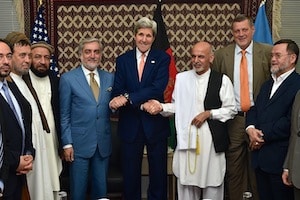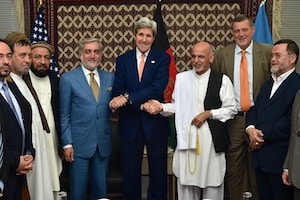
…or is it a formula for perpetual war?
President Obama may have told Congress and the American people in his state of the union address that the American combat mission in Afghanistan is over, but that claim is a bit disingenuous, to put it charitably.
To be sure, the military presence has been reduced, and only 9,800 troops remain in Afghanistan. However, the incoming Secretary of Defense, Ashton Carter, already indicated a willingness to slow down or possibility reverse the ongoing drawdown, should security conditions “degrade.”
There is a ample potential for security conditions to degrade. Almost 40,000 private contractors remain in Afghanistan. These contractors have a twofold mission:
First, they will train, support, and assist the Afghan security forces in its anti-Taliban and anti-drug operations. The United States has already poured over $65 billion into this project with limited results and much corruption.
Second, the contractors will run an un-auditable program known as Business Stability Operations, which is aimed at convincing private investors to exploit Afghanistan’s mineral wealth (how such an exploitation will be interpreted by distrustful Afghans is an open question: but given the levels of corruption to date, a worst case assumption would be prudent).
In short, these contractors will be lucrative targets for xenophobic Afghan guerrillas.
Readers longing for a little light at the end of the Afghan tunnel should also remember that the Obama Administration signed a bilateral security agreement that allows US troops to remain in Afghanistan until at least 2024 — and its language does not preclude these troops from engaging in combat operations.
Reprinted with author’s permission. See his website here.

